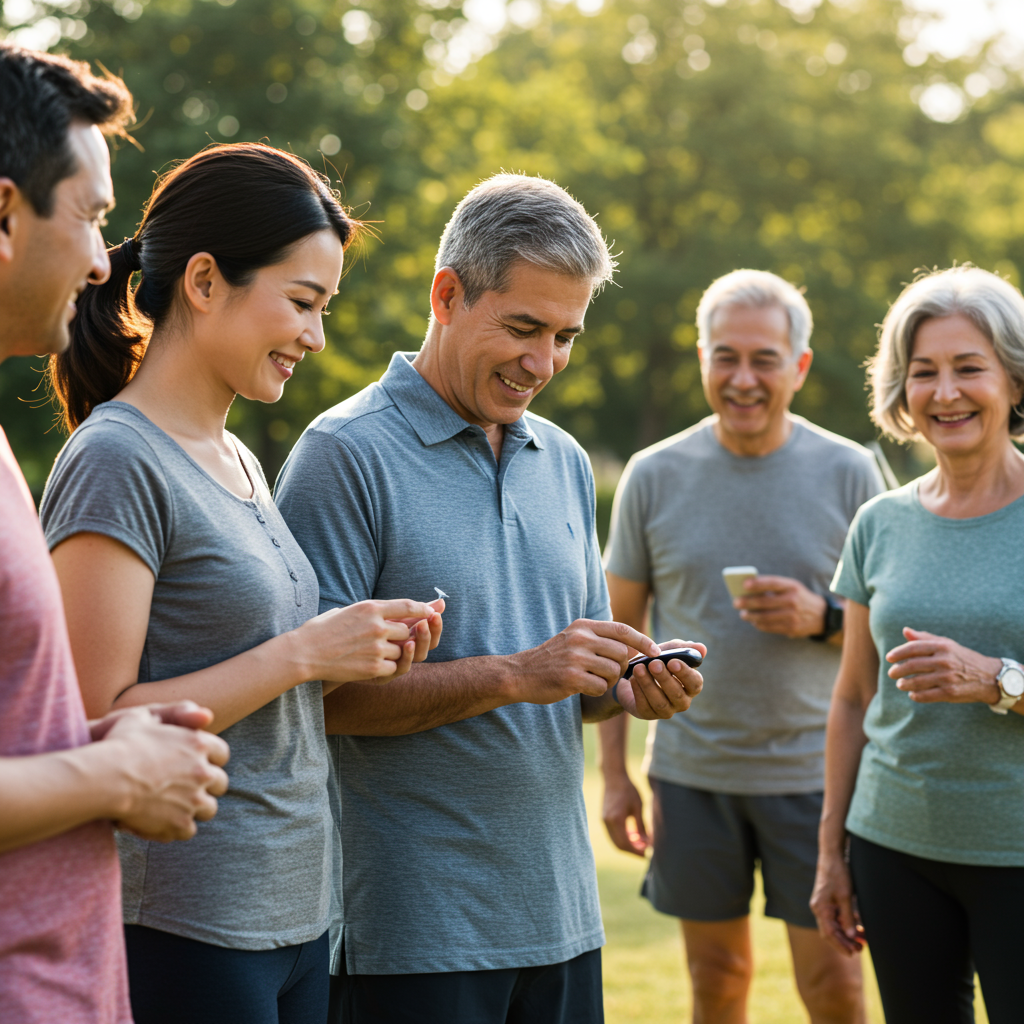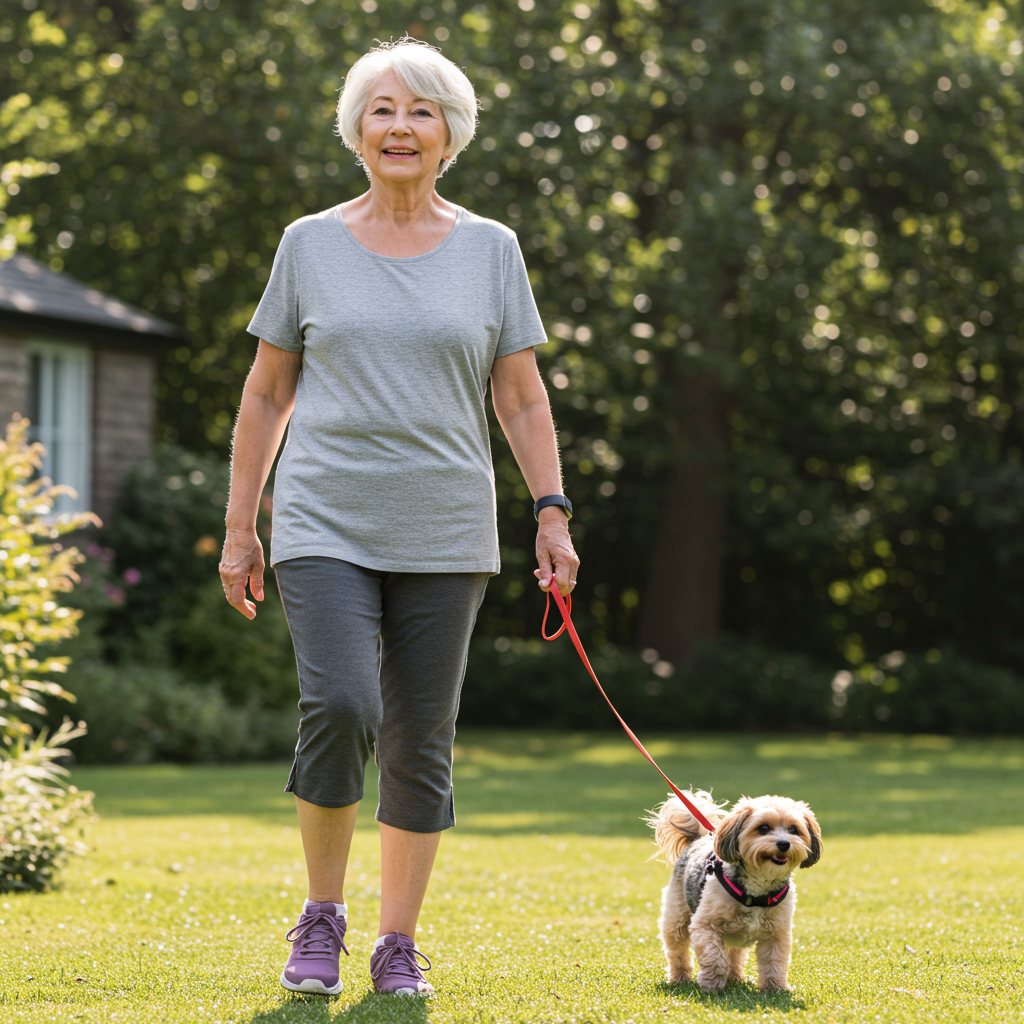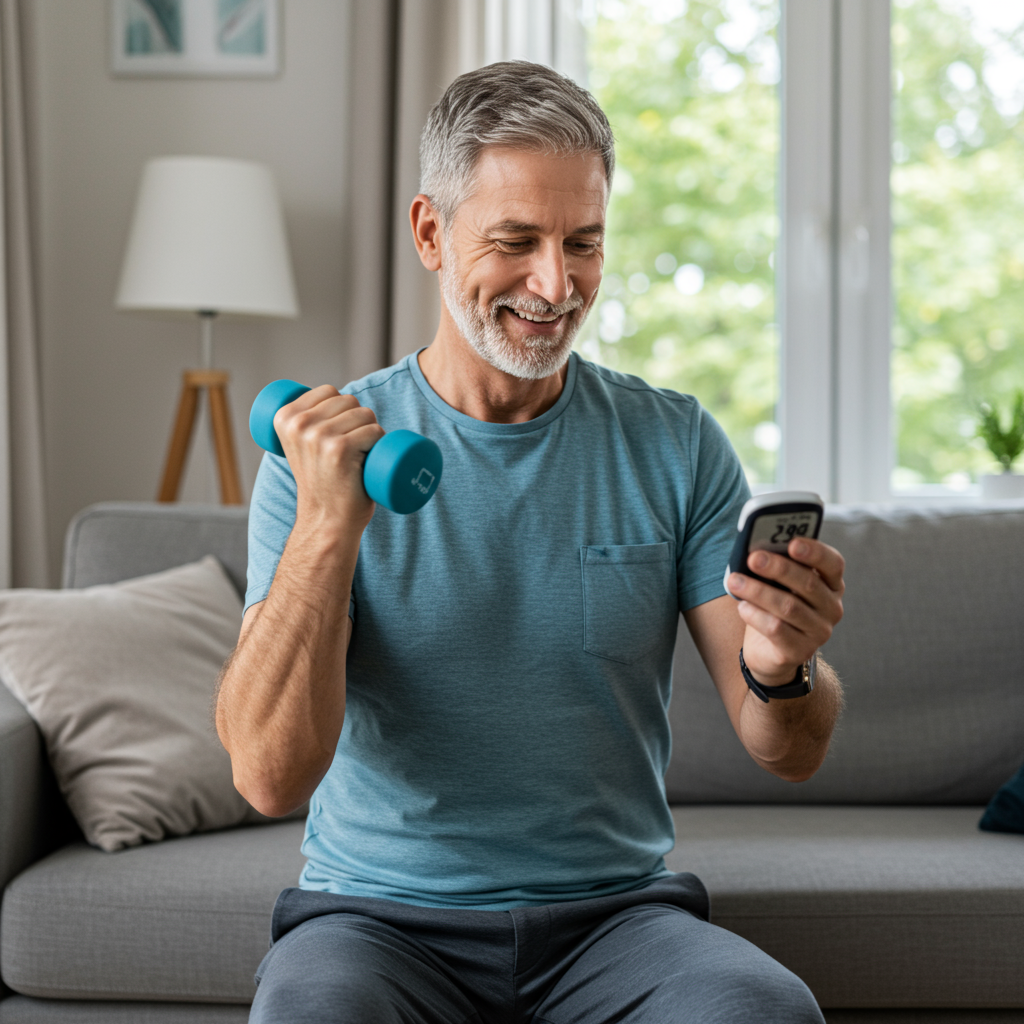Den Kreislauf durchbrechen: Wie Sie mit Diabetes anfangen zu trainieren, wenn Sie es nicht gewohnt sind
Bewegung ist Medizin – besonders für diejenigen von uns, die Diabetes managen. Dennoch kann es überwältigend wirken, eine Trainingsroutine zu beginnen, wenn man bislang inaktiv war. Als jemand, der regelmäßig über die Neurowissenschaften der Verhaltensänderung spricht, weiß ich, dass es beim Aufbau einer Trainingsgewohnheit nicht nur um Willenskraft geht – sondern darum, mit Ihrer Biologie zu arbeiten, nicht gegen sie. Lassen Sie uns erkunden, wie Sie mit Bewegung beginnen können – auf eine nachhaltige, wirksame und speziell für das Blutzuckermanagement vorteilhafte Weise.
Verstehen Sie Ihr Motivationsfenster
Das Gehirn arbeitet mit dem, was ich „Motivationsfenster“ nenne – Zeiträume, in denen unsere Neurochemie darauf ausgerichtet ist, neue Verhaltensweisen zu initiieren. Für Menschen mit Diabetes öffnet sich dieses Fenster oft, wenn wir Rückmeldungen zu unserer Gesundheit bekommen, sei es durch ein beunruhigendes Laborergebnis oder weil wir spüren, wie bestimmte Lebensmittel unsere Energie beeinflussen.
Ihr erster Schritt ist nicht das perfekte Training zu finden – sondern Ihre persönliche Motivation zu erkennen. Fragen Sie sich: Was wird verbesserte Fitness für Ihr Diabetesmanagement tun? Vielleicht wünschen Sie sich stabilere Blutzuckerwerte, weniger Medikamente oder einfach mehr Energie, um mit Ihren Enkeln zu spielen. Schreiben Sie dies sichtbar auf. Studien zeigen, dass das Verknüpfen von Bewegung mit sinnvollen Zielen die Belohnungsbahnen im Gehirn aktiviert und so die Wahrscheinlichkeit für Beständigkeit erhöht.

Denken Sie daran: Motivation folgt auf Handlung, nicht umgekehrt. Sie werden nicht immer motiviert sein, bevor Sie anfangen – aber der erste kleine Schritt löst oft schon die neurochemischen Veränderungen aus, die Motivation erzeugen.
Die Wissenschaft des kleinen Beginns
Der häufigste Fehler beim Trainingsstart ist, zu viel auf einmal zu wollen. Diese Herangehensweise löst Stressreaktionen aus und erschwert besonders für Menschen mit Diabetes die Beständigkeit.
Setzen Sie stattdessen auf das Prinzip der „minimal effektiven Dosis“:
-
Beginnen Sie mit 10–15 Minuten jeglicher Bewegung, die Sie nicht hassen. Gehen ist ideal – Untersuchungen zeigen, dass selbst kurze Spaziergänge nach Mahlzeiten die Blutzuckerspitzen um 30–40 % senken können.
-
Frequenz vor Intensität. Täglich 10 Minuten Bewegung ist für die Gewohnheitsbildung neurologisch wirksamer als 70 Minuten einmal pro Woche. Die Belohnungssysteme Ihres Gehirns reagieren auf Beständigkeit.

- Überwachen Sie den Blutzucker vor und nach dem Training. Das gibt Ihnen sofort Rückmeldung, wie sich die Bewegung auf Ihren Körper auswirkt, und schafft eine starke Rückkopplungsschleife. Viele Menschen mit Diabetes erkennen bereits nach mäßiger Bewegung Verbesserungen der Blutzuckerwerte.
Für alle, die Angst vor Hypoglykämie beim Sport haben, gilt: Starten Sie mit kürzeren, weniger intensiven Einheiten, um herauszufinden, wie Ihr Körper reagiert, und senken Sie das Risiko. Halten Sie immer schnell wirkende Kohlenhydrate bereit, besonders zu Beginn.
Umgebung und Chronobiologie als Hebel nutzen
Die Umgebung prägt das Verhalten stärker als Willenskraft. Schaffen Sie eine Art „Verpflichtungs-Architektur“, um Bewegung unvermeidlich zu machen:
-
Morgendliche Bewegung nutzt Cortisol aus. Training während des natürlichen morgendlichen Cortisol-Peaks (innerhalb von 30–60 Minuten nach dem Aufstehen) stabilisiert den Blutzucker den ganzen Tag. Untersuchungen zeigen, dass morgendliche Trainierende eine bessere Blutzuckerkontrolle und höhere Beständigkeit aufweisen.
-
Bauen Sie Barrieren ab. Schlafen Sie in Sportkleidung, falls Sie morgens trainieren wollen. Stellen Sie die Sportschuhe an die Tür. Halten Sie Blutzucker-Messgeräte griffbereit. Jedes beseitigte Hindernis erhöht die Wahrscheinlichkeit, dass Sie tatsächlich aktiv werden.
-
Stapeln Sie Gewohnheiten. Verknüpfen Sie Bewegung mit einer bestehenden Routine. Gehen Sie zum Beispiel 10 Minuten spazieren, nachdem Sie Ihren Blutzucker gemessen haben, oder nach Mahlzeiten, wenn der Blutzucker typischerweise steigt.
-
Nutzen Sie zeitlich begrenzte Essfenster. Bewegung im nüchternen Zustand (falls dies für Ihren Diabetesplan sicher ist) oder vor der ersten Mahlzeit kann die Insulinsensitivität erhöhen. Sprechen Sie immer mit Ihrem Arzt über die beste Trainingszeit in Bezug auf Ihre Medikation.
Progressive Anpassung: Auf Erfolgen aufbauen
Körper und Gehirn passen sich an beständige Reize an. Nach der Etablierung einer Basisgewohnheit (in der Regel nach 2–3 Wochen regelmäßiger Übung) können Sie die progressive Anpassung beginnen:
-
Verlängern Sie zuerst die Dauer, dann die Intensität. Verlängern Sie Ihre Spaziergänge um 5 Minuten, bevor Sie das Tempo steigern.
-
Führen Sie Krafttraining schrittweise ein. Schon Übungen mit dem eigenen Körpergewicht, wie angepasste Kniebeugen, Liegestütze an der Wand oder Aufstehen von einem Stuhl, verbessern die Glukoseaufnahme der Muskeln und erhöhen die Insulinsensitivität.
-
Feiern Sie Stoffwechselverbesserungen. Nehmen Sie Verbesserungen bei den Blutzuckerwerten nach dem Training, beim Energielevel und bei der Stimmung wahr und erkennen Sie sie an – diese Belohnungen stärken die neuronalen Bahnen für Trainingsverhalten.
-
Rechnen Sie mit Eingewöhnungsphasen. Die Blutzuckerreaktion auf Bewegung verändert sich, wenn Ihre Fitness besser wird. Der regelmäßige Austausch mit Ihrem Ärzteteam ermöglicht passende Anpassungen Ihrer Medikation, je effizienter Ihr Körper wird.
Denken Sie daran, dass Training nicht nur Kalorien verbrennt – es verändert grundlegend, wie Ihre Zellen auf Insulin reagieren und Glukose verarbeiten. Jede Einheit, unabhängig von Länge oder Intensität, ist ein Schritt zu besserer Stoffwechselgesundheit.

Beginnen Sie dort, wo Sie sind, nutzen Sie, was Sie haben, und setzen Sie auf Beständigkeit statt Intensität. Ihr Körper – und Ihr Blutzuckermessgerät – werden es Ihnen danken.
Quellen:
Colberg, S. R., Sigal, R. J., Yardley, J. E., Riddell, M. C., Dunstan, D. W., Dempsey, P. C., Horton, E. S., Castorino, K., & Tate, D. F. (2016). Physical Activity/Exercise and Diabetes: A Position Statement of the American Diabetes Association. Diabetes Care, 39(11), 2065-2079.
Reynolds, A. N., Mann, J. I., Williams, S., & Venn, B. J. (2016). Advice to walk after meals is more effective for lowering postprandial glycaemia in type 2 diabetes mellitus than advice that does not specify timing. Diabetologia, 59(12), 2572-2578.






